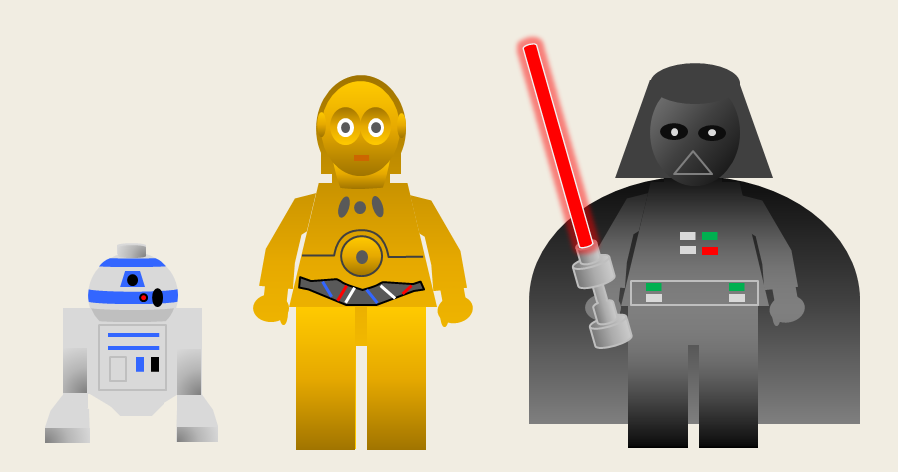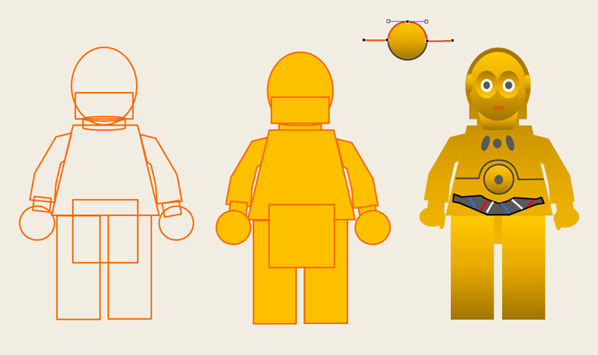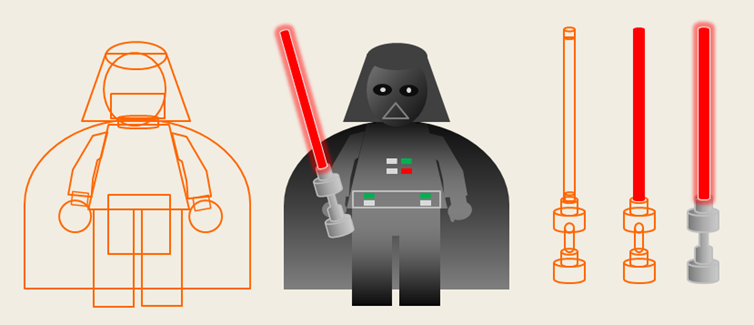E-Learning Challenge: Create Your Own E-Learning Characters with Pictograms
The Challenge
This ELH Challenge was to create your own E-learning Characters using a pictogram approach.
After checking out Mike Taylor’s great article on creating graphics, I ventured slightly off topic and went for an intergalactic theme to the challenge, creating the famous characters of R2D2, C3PO, and Darth Vader. I used PowerPoint as the image creation tool and utilised the program’s various shape tools.

R2D2
R2D2 had some fairly standard basic shapes: a circle for the head, square for the body, and rectangles for the legs.
Once I had the shapes in place, I used the Shape Union tool to create the basic character.
To bring the character to life, I added some gradient filled components for the legs and feet. Small rectangles and lines were used to provide detail on the head and body.

C3PO
C3PO required a greater number of components. The body, head, and arm shapes where combined using the Shape Union tool, enabling a gradient fill to be applied to the whole body.
In order to create the line on C3PO’s chest, a mixture of the Freeform Shape tool, Bezier Curves, and the Edit Points tool were used.

Darth Vader
The body components from C3PO were used to create Darth Vader. I added some extra shapes for the helmet and cloak.
The lightsaber was created using a number of Can Shapes of varying dimensions. The illuminated part has a thin white outline with an added glow effect.

The Final Characters
Here are the characters, formed from simple shapes and gradient fills.

